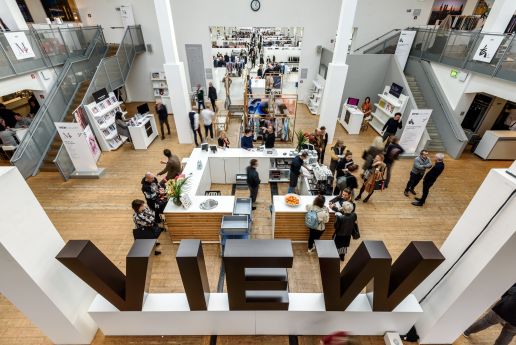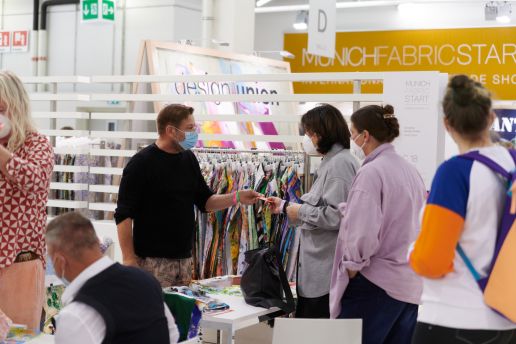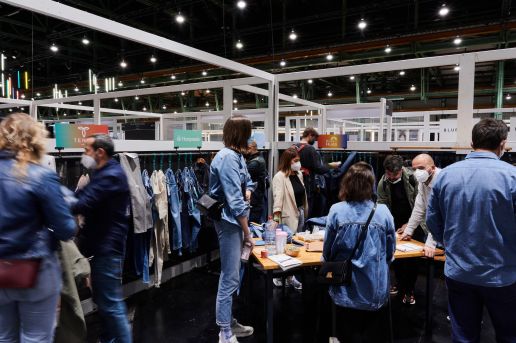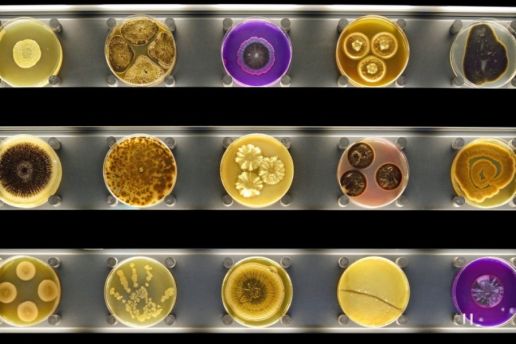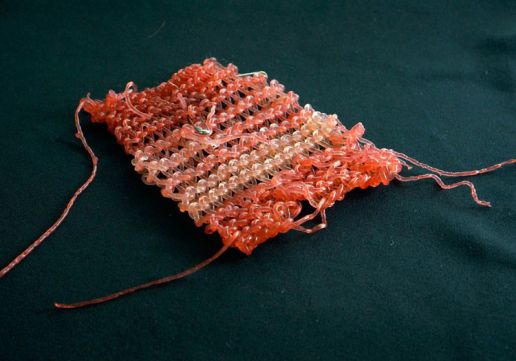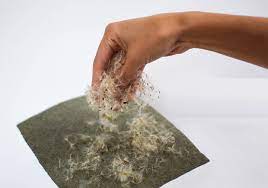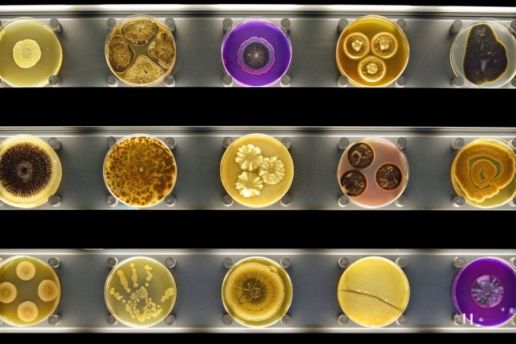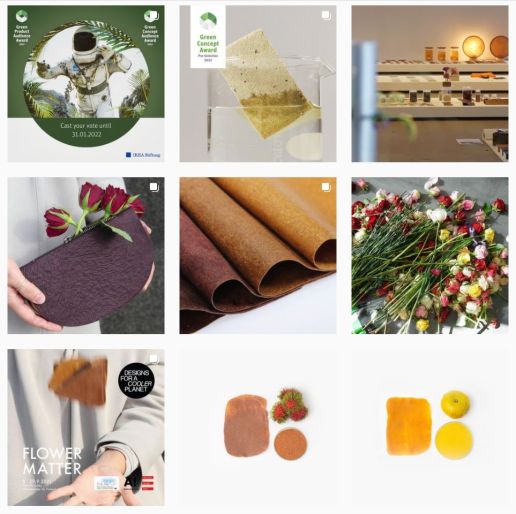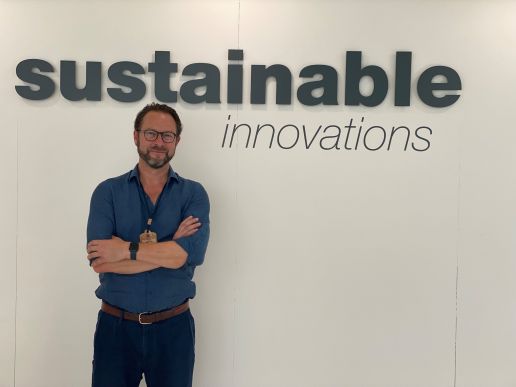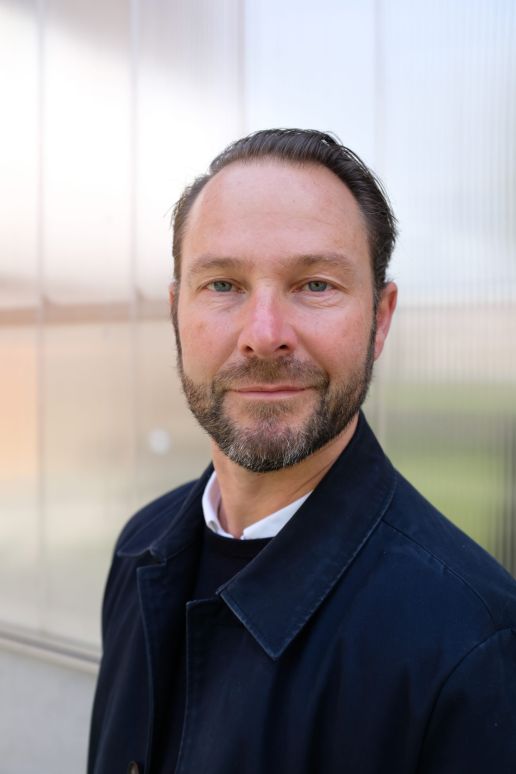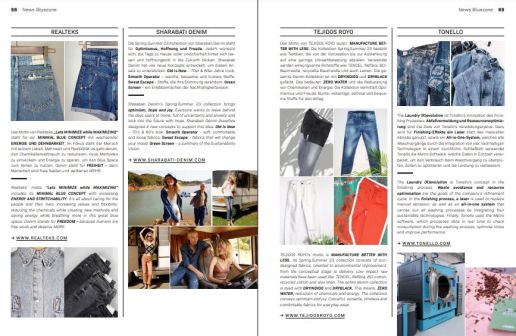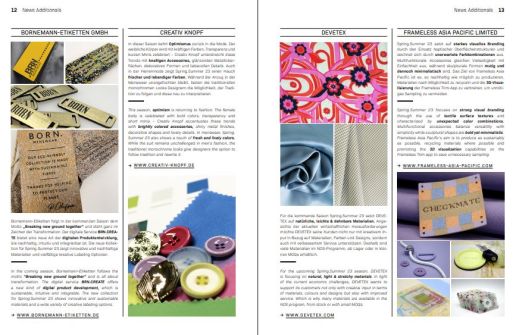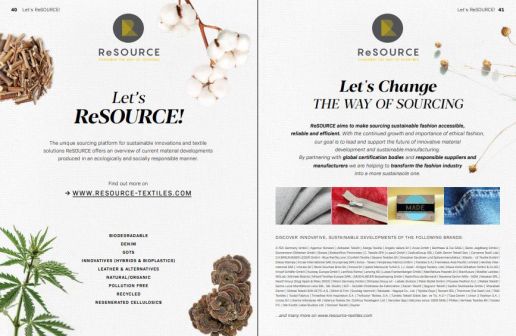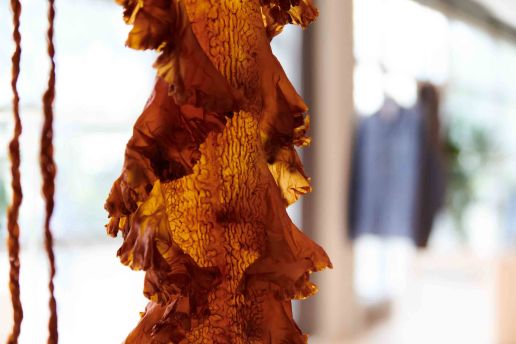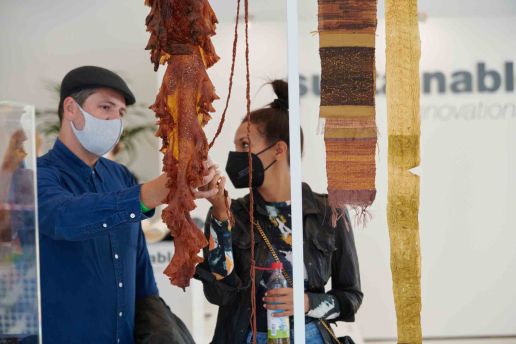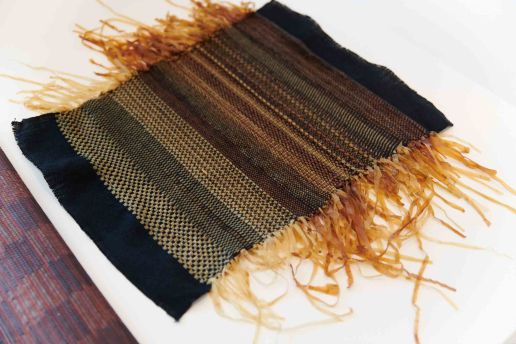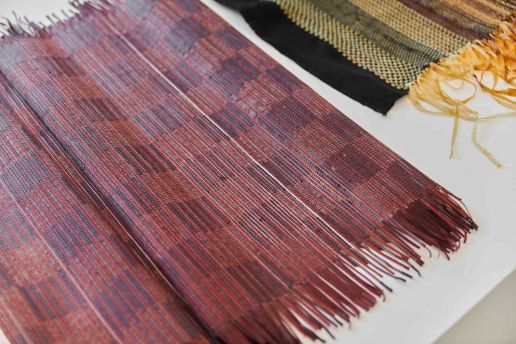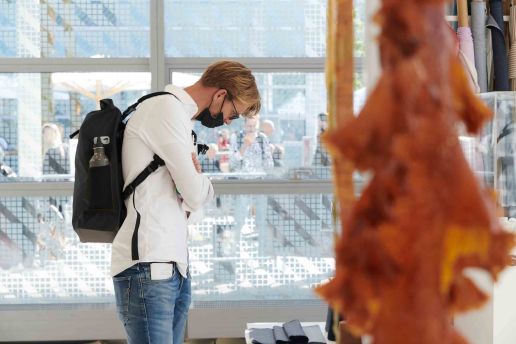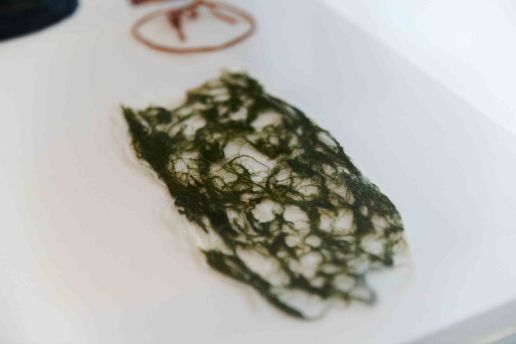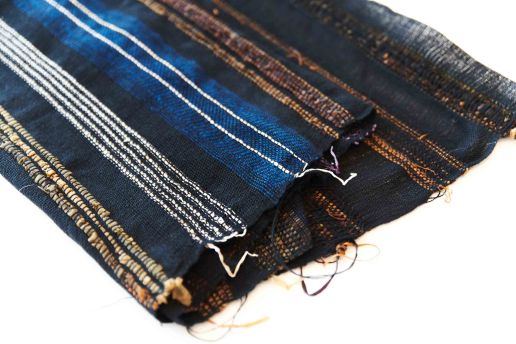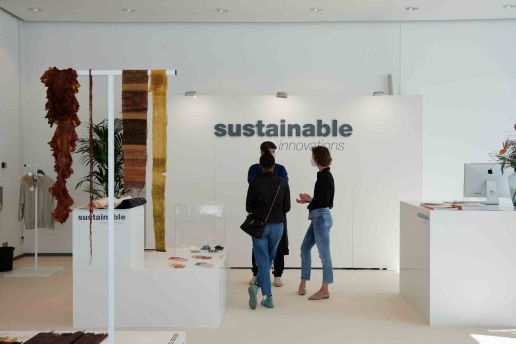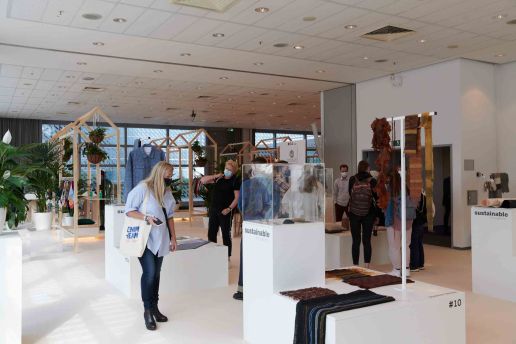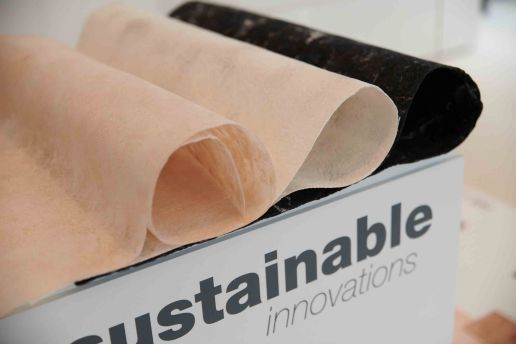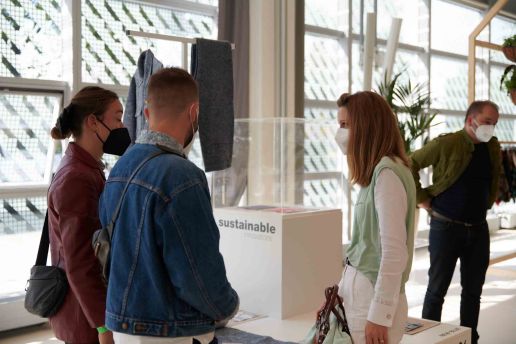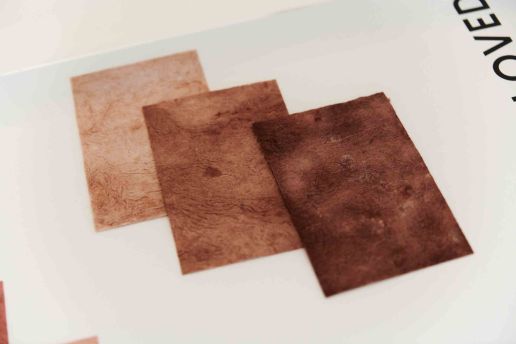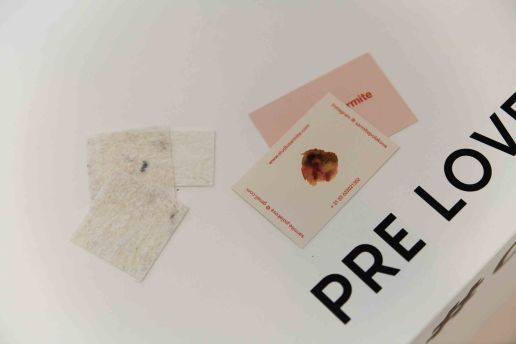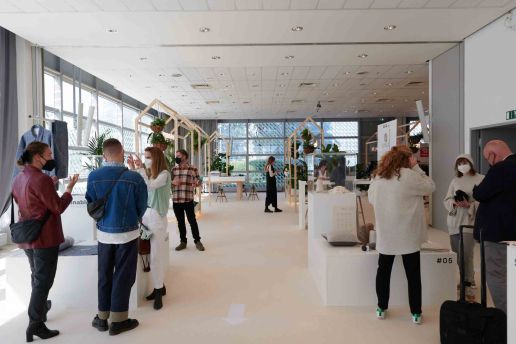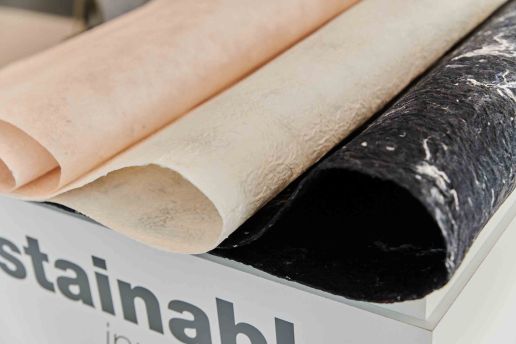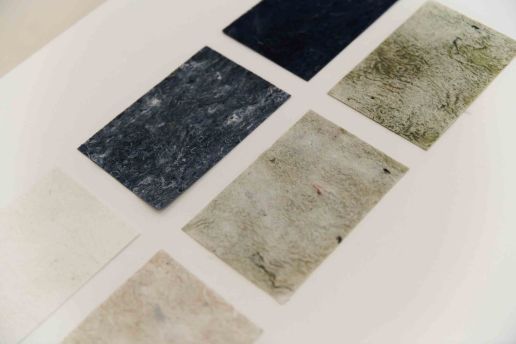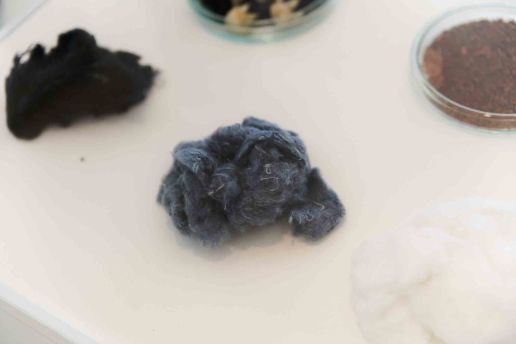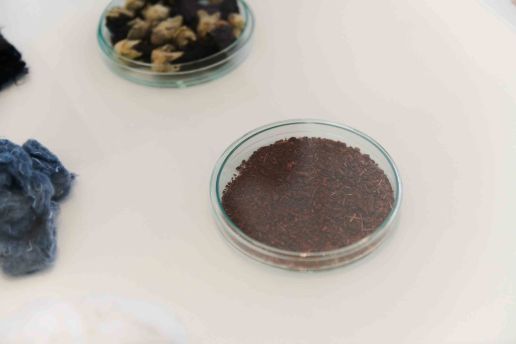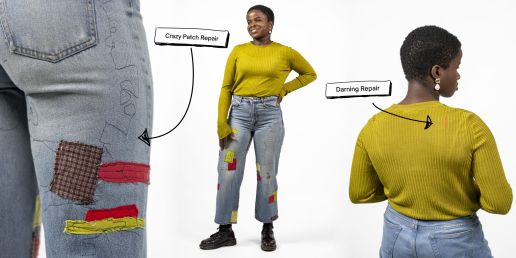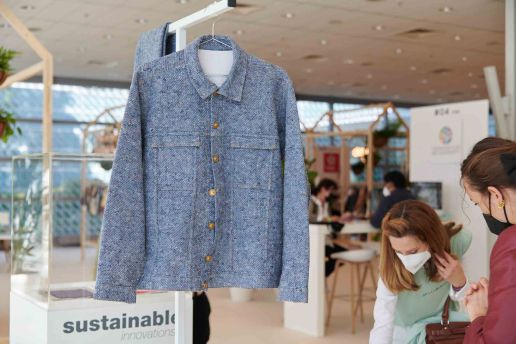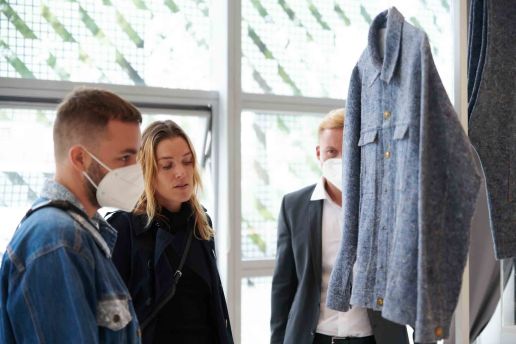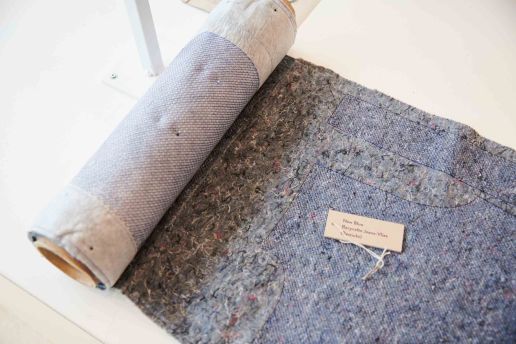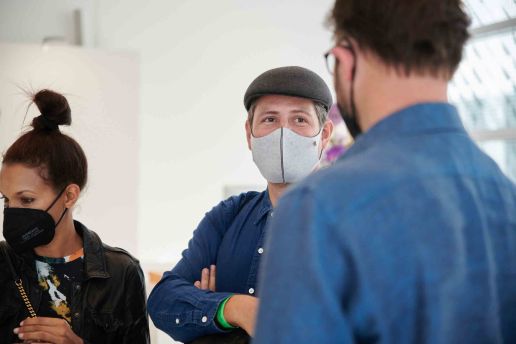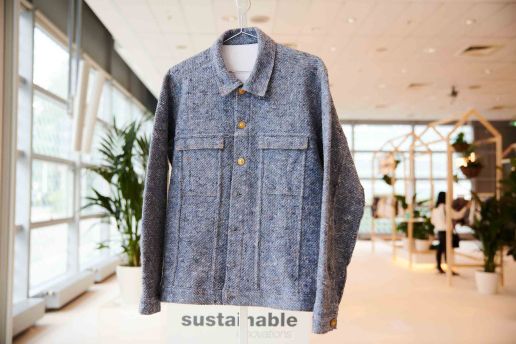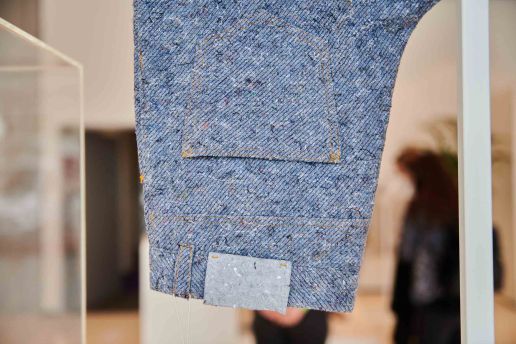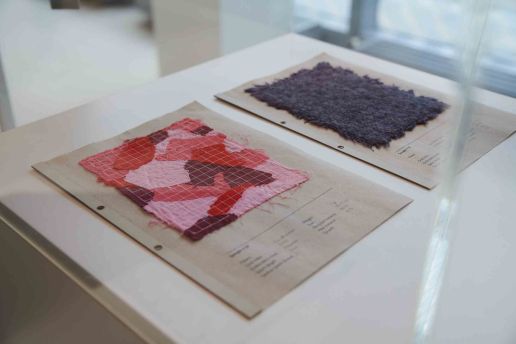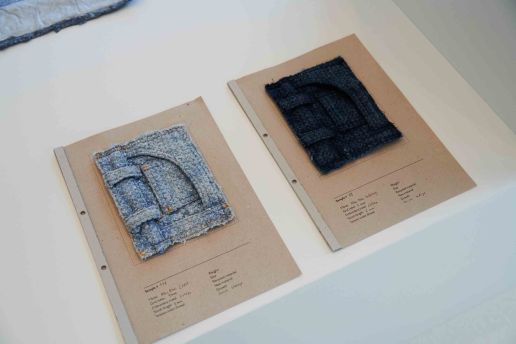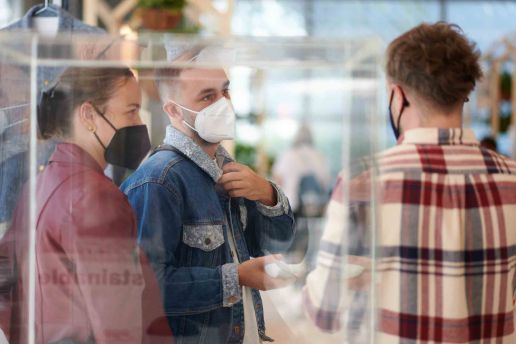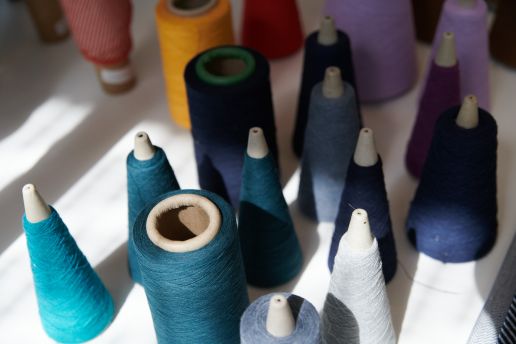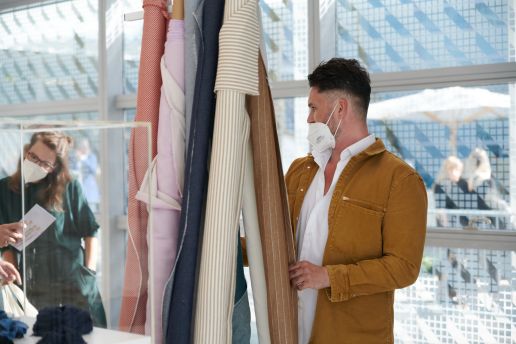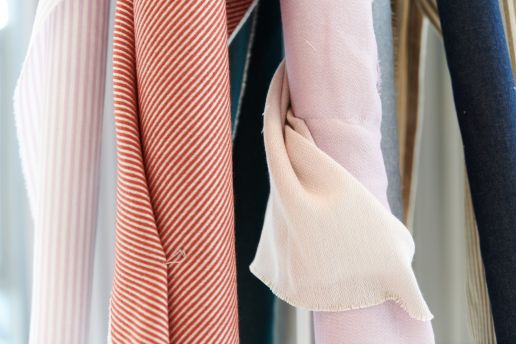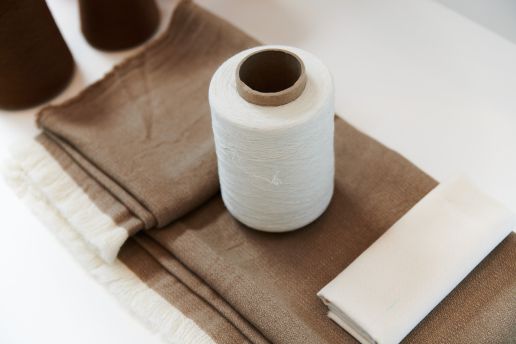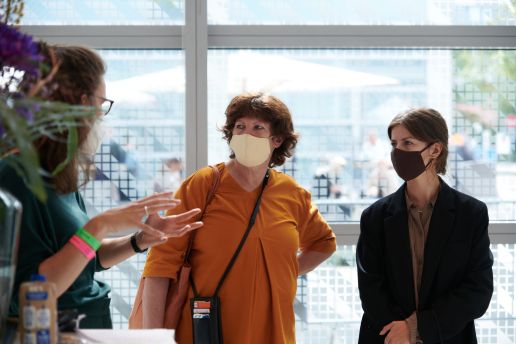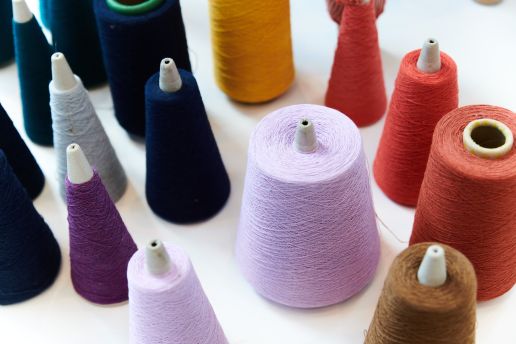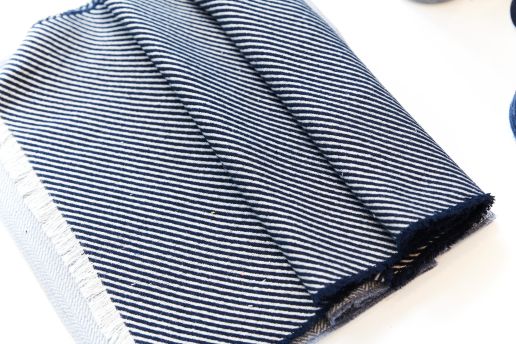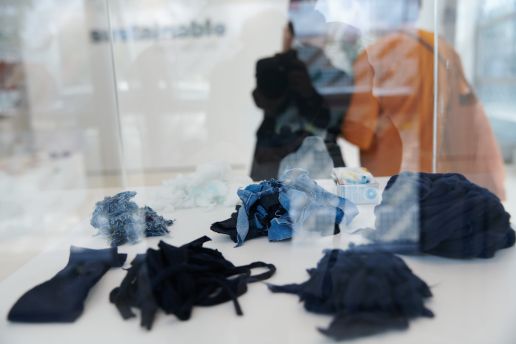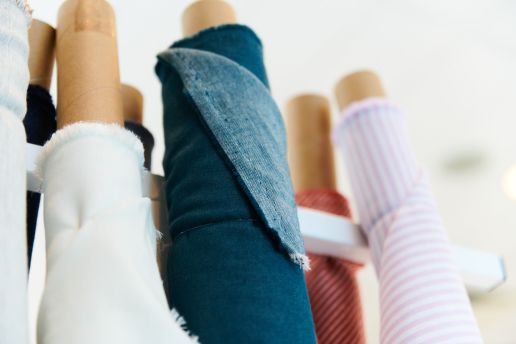Sustainable Innovations
Sustainable Innovations #3: +17,4% - Offcuts Collection
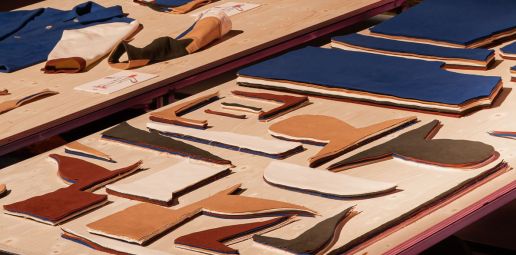
Making good use of leftovers from textile production – and using them to upgrade the same garments?
It’s possible: while working in the garment industry, product designer Seok Park saw the vast amounts of leftovers that are created. It inspired him to put them to good use. With his studio Popopo from Eindhoven, he launched the OFFCUTS project for this reason. In the OFFCUT collection, additional parts for garments are made from fabric scraps – fabric scraps that are left over from the production of exactly these garments and that offer added value when the garments are used. The goal is not only to reuse scraps, but also to add value to them to make another product and thus incorporate them into the garments produced.
Each work is named after the percentage that indicates the waste in the production of garment patterns.
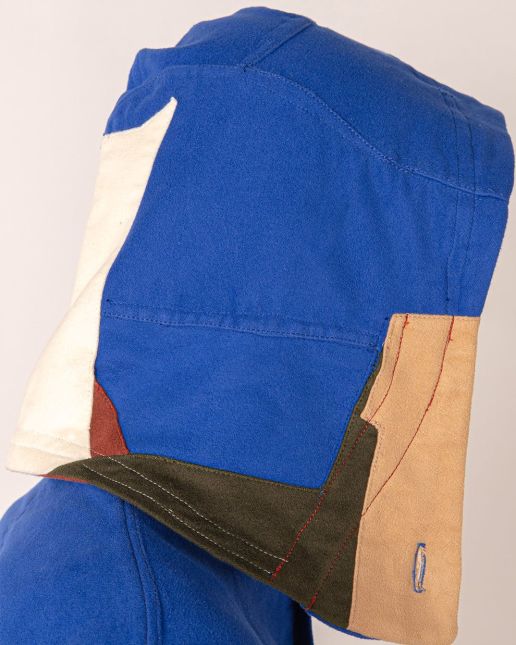
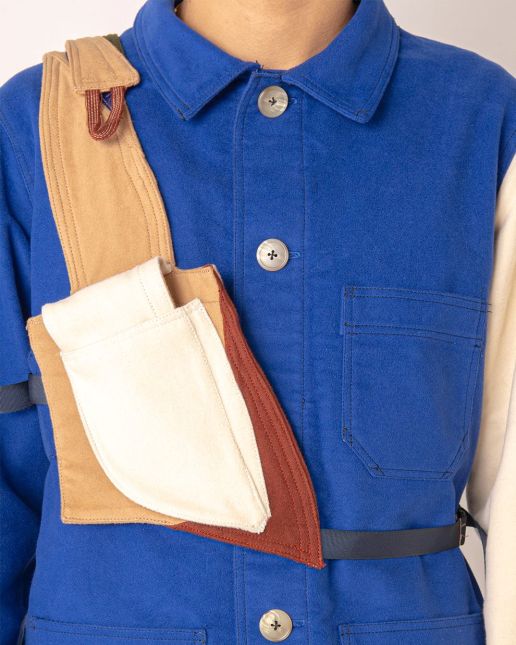
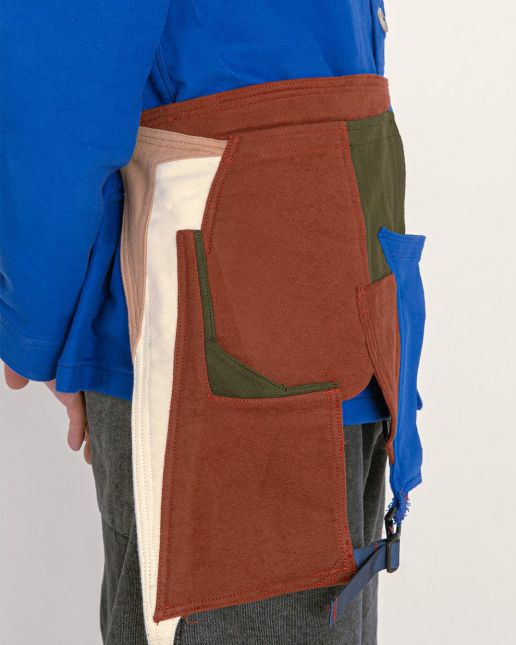
Re-use, re-value, re-connect
“Through the project, I would like to point out the potential materiality of these leftovers by discovering their own unique story as a general material beyond industrial by-products or reusable waste.”
– Seok Park
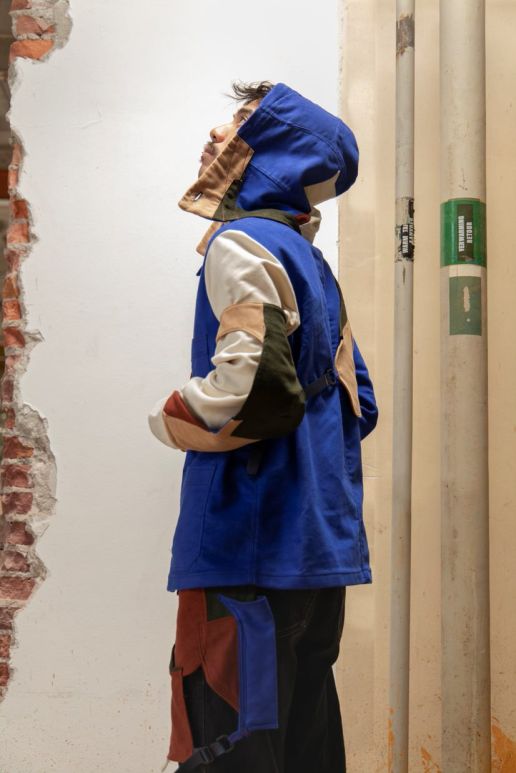
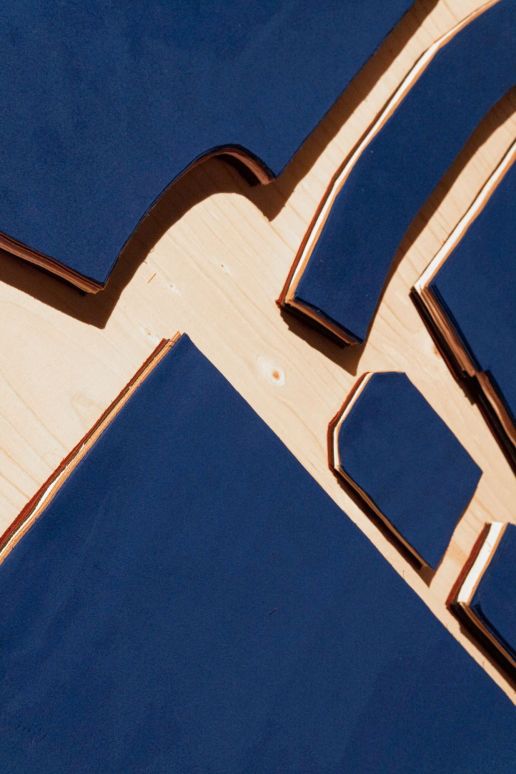
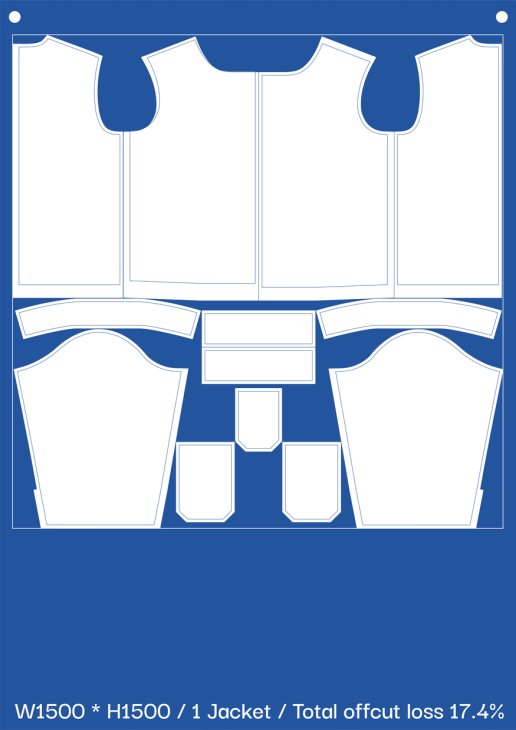
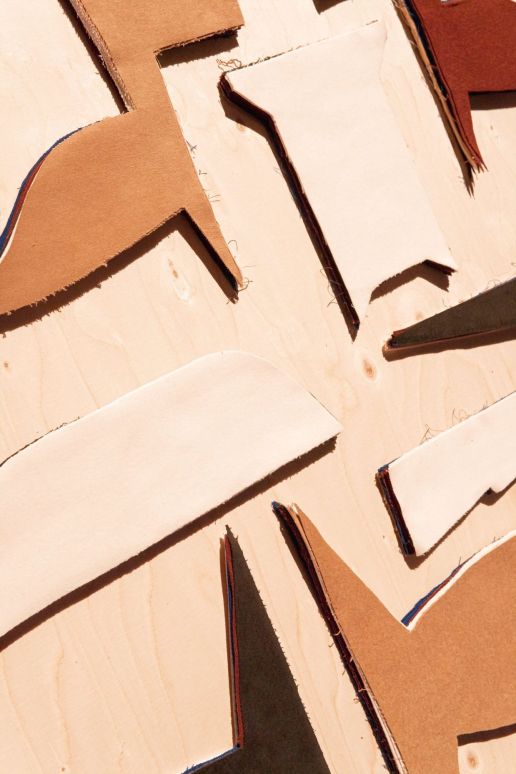
17.4: This is the percentage of excess cut produced in the production of chore jackets, the classic workwear item. The functional value is now obsolete – so the project uses +17.4% leftover pieces from 60 Chore Jackets to produce a collection of practical accessories. These accessories offer additional benefits for specific conditions such as weather conditions of the different seasons and more.
—————————————————————-
Find more infos about SUSTAINABLE INNOVATIONS in the interview with Simon Angel, curator of the Sustainable Innovations forum, the project #1 ‘Biotic’ and the project #2 ‘Offcuts’:
Interview about Pre-Creation, -Action and -Connection in our industry >>
Sustainable Innovations SS23 #1: Bacteria to wear by Lionne van Deursen >>
Sustainable Innovations SS23 #2: Flower Matter by Irene Purasachit >>
—————————————————————-
Textile Inventions You Need To Be Acquainted With In 2022
Textile Inventions You Need To Be Acquainted With In 2022
(If You Are Not Already)
AN INDUSTRY INSIGHT BY FASHNERD FOUNDER MUCHANETA KAPFUNDE.
The race to digitise the textile sector is expected to continue to gain momentum throughout 2022. However, with sustainability still a key theme, the good news is that game-changing innovations are helping a very traditional industry recognise business opportunities that push towards a fundamental shift in industry practices and any future developments.
Reimagining the Textiles System With a New Mindset
No longer held back by conventional processes, more and more textile manufacturers, suppliers, buyers, and designers are now transitioning towards a textile system that allows them to harness better economic, societal, and environmental outcomes. In addition, prioritising the application of new technologies has helped the textile industry take those first steps of progress towards adopting new business models, technological innovation, and radical collaboration.
“Our success depends not only on the work within our own value chain but on disruptive partnerships across a broader textile production and manufacturing ecosystem,” stated Cyrus Wadia, VP Sustainable Business and Innovation at Nike, in the Ellen MacArthur Foundation report “A New Textiles Economy: Redesigning Fashion’s Future”.
As technology continues to have a significant impact on the textile industry, in 2022, make sure you keep an eye on the following innovations from these three game-changing companies:
1. Kelp – One Of The Most Renewable Natural Resources: Algiknit
In the business to make textile production more environmentally conscious, Algiknit offers material options that perform as well as conventional materials.
“The yarn we’re producing today has the look and feel of the natural fibres consumers are familiar with, plus all the makings of a no-compromise conscious material,” said Aaron Nesser, co-founder and CTO of AlgiKnit, in a statement.
Staying ahead of the curve in fabric innovations, Algiknit could effectively bring kelp-based yarn into the mainstream. The startup is currently poised to scale the production of eco-conscious yarns for use by forward-thinking global fashion brands.
With Kelp considered one of the most renewable natural resources globally, the Brooklyn-based material-maker of carbon-neutral, toxic-free textiles has spent the past four years developing technology to produce yarns on a commercial scale. They hope that they will be able to scale production to a point where they will be able to meet growing material demand in time.
2. Freshwater-free Textile Fibres, The Next Alternative: SaltyCo
UK startup, SaltyCO, has come up with freshwater-free textile fibres. Hoping to establish an alternative to freshwater-intensive cotton cultivation, SaltyCO is on a mission to tackle the side effect of wasteful freshwater use by rethinking the system and installing a new category in sustainable textile production.
Acknowledging that there is no single solution to “sustainability”, SaltyCO’s vision is to build a planet-healing supply chain that begins with an approach to regenerative agriculture. Hoping to create the most impact by sourcing their plant material, the materials science company has so far found a suitable salt-tolerant plant for the textile supply chain. They are now researching regenerative cultivation techniques and textile products. The outcome has been BioPuff, a plant-based fibre fill produced in SaltyCO’s laboratory in Scotland.
An alternative to animal and petroleum-based products, BioPuff is made of pure cellulose and has been reported to reduce petroleum by 70% in every jacket impact and save up to 25 litres of fresh drinking water.
3. Built with Biology, Not Oil: Biofabricate
Do you know that we are at the dawn of a new age where we can biodesign and biofabricate? No longer confined to small-scale experiments, biomaterials have garnered interest from well-known brands, like Adidas and Hermès, looking for plant-based alternatives to petroleum.
Recognising the potential of ‘Living Factories’ like Mycelium, Bacteria, Yeast and Algae, is Biofabricate. They are a startup that believes that a sustainable material world is built with biology, not oil. Recognising that there are no shortcuts, Suzanne Lee, founder and CEO of Biofabricate, believes that patience and tenacity by the industry should be a requirement.
“This can be a struggle for many designers – who like fast outcomes. But unfortunately, biology doesn’t work like that”, explained Lee when interviewed by Nextnature.net.
As a new generation of biofabrication and cell agriculture startups continue to set the standard, Biofabricate has become the go-to for those looking to bridge design with biotech intelligently.
In the current landscape, textile inventions are setting the standard by driving the textile industry to understand the facts and participate in the solutions. But, in the end, material innovation is a constant journey, one you should already be on if you aren’t already.
Are you interested in more indepth facts and figures of the new textile economy?
Check out FashNerd.com to follow the journey of the industry or read one of the following blog articles:
Antimicrobial Textiles, Hero or Hype?
The New Textiles Economy, A Catalyst For Transformation?
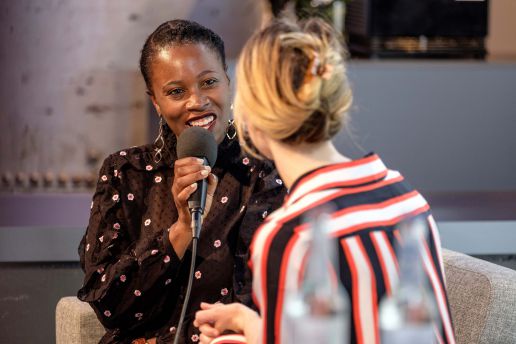
ABOUT THE AUTHOR
Founding editor-in-chief of FashNerd.com, Muchaneta has worked in the fashion industry for over 14 years. She is currently one of the leading influencers speaking and writing about the merger of fashion with technology and wearable technology.
Muchaneta Kapfunde | editor@fashnerd.com
Sustainable Innovations #2: Flower Matter
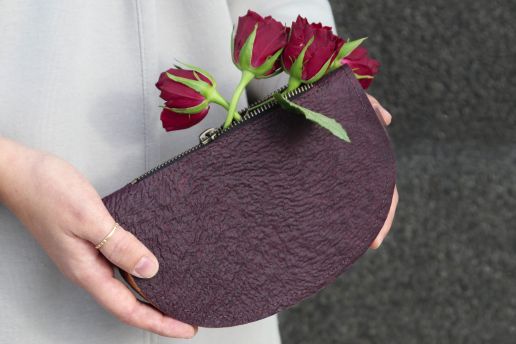

Whether for the home, in a restaurant or as a gift for loved ones – beautiful bouquets of flowers bring joy in many situations in life. The problem: flowers planted for commercial sale have a very limited lifespan. Once they are in the vase, they wilt after a few days and are thrown away – about 40 percent of the flowers are never sold, so florists have to dispose of them themselves. Irene Purasachit, a designer living in Finland, gives these flowers a second life – driven by the vast amounts of flower waste that are produced daily at the markets in her home country of Thailand.
She recycles them into fabric and paper, from which she makes sustainable bags, purses or flower paper. This not only creates new, biodegradable and plastic-free products – it also saves tons of waste.
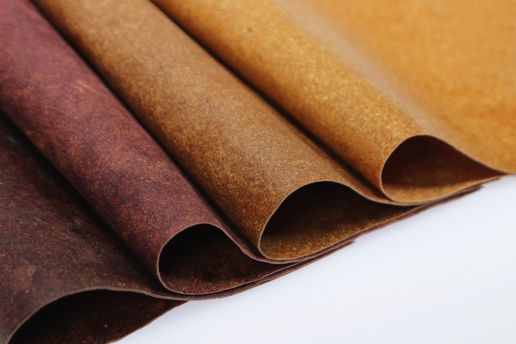
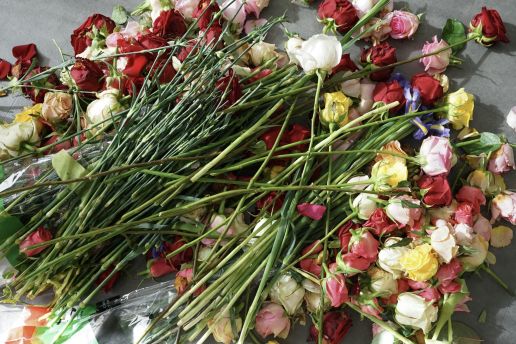
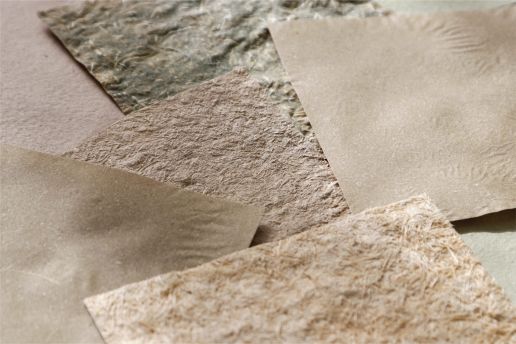
For her Flower Matter project, she creates, among other things, “Flower Paper”, a paper made of 100 percent flower stems and leaves. Unique one-offs: the paper varies in colour and structure – depending on the type of flower used. With her “Flaux” material – the word stands for Flower and Flexible Sheet – she creates an all-natural, leather-like fabric that is then made into purses and bags for her collection.
For Flaux, she mainly uses roses and carnations. The colour palette: natural, classic reds, soft pinks, bold orange and soft yellows – there’s something for everyone.
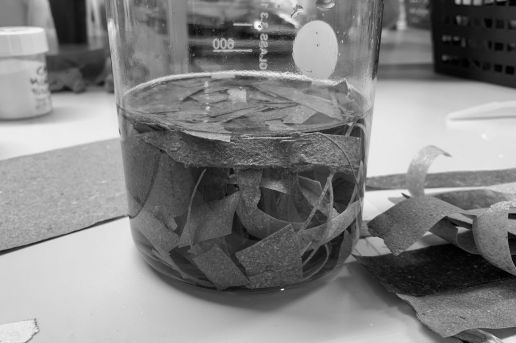
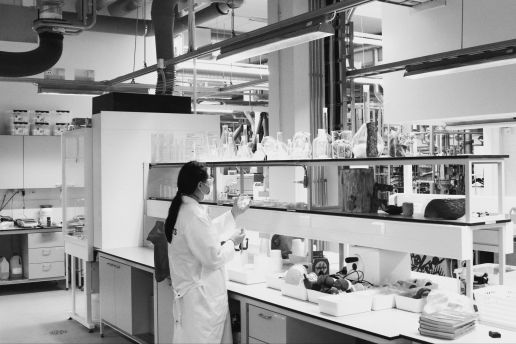
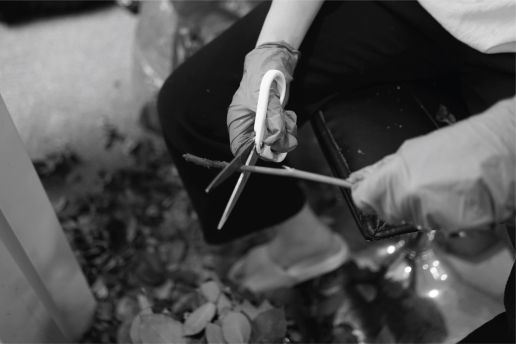
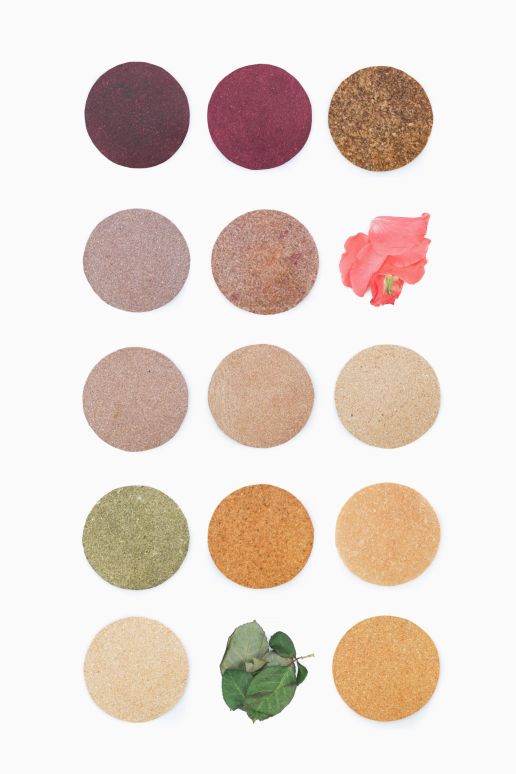
“Even though I am still in a considerably early stage of the materials’ development, I have been facing many dilemmas on what really is sustainable throughout my journey of Flower Matter. For example, how can I create a completely natural, biodegradable material from flower waste that can live up to the market’s high expectations on its properties (extremely durable, waterproof, etc)? Ultimately, I learned that it is extremely hard to maintain all expectations. Aside from my intention to continue developing my flower materials as ecologically as possible, I also want to challenge the market’s perceptions toward innovative materials. I do think that in order to move forward to a more sustainable world, we must learn to use and to work with new materials in a different way than the highly industrialised processes we are used to now.”
– Irene Purasachit
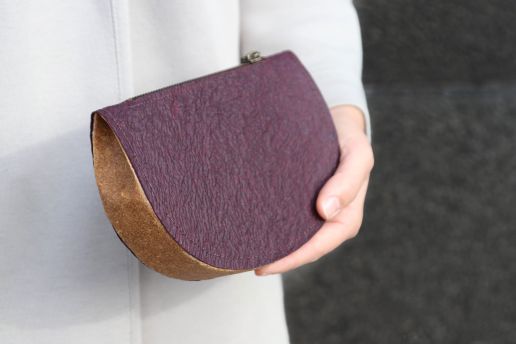
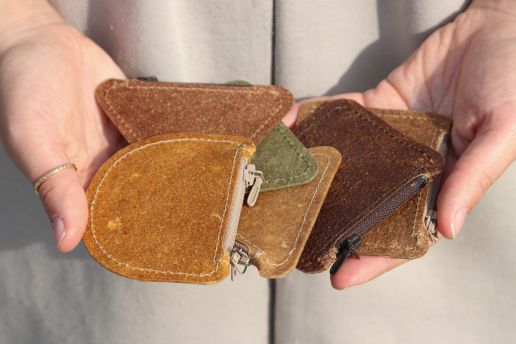
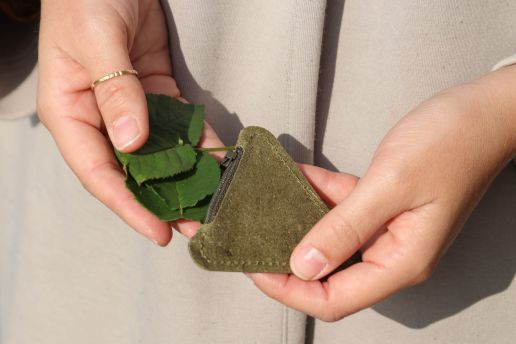
Please find more infos about SUSTAINABLE INNOVATIONS in our newest interview with Simon Angel, Curator of the Sustainable Innovations Forum, and in the article about the project #1 ‘Biotic’:
Interview about Pre-Creation, -Action and -Connection in the fashion industry >>
Sustainable Innovations SS23 #1: Bacteria to wear by Lionne van Deursen >>
—————————————————————-
Bacteria to wear
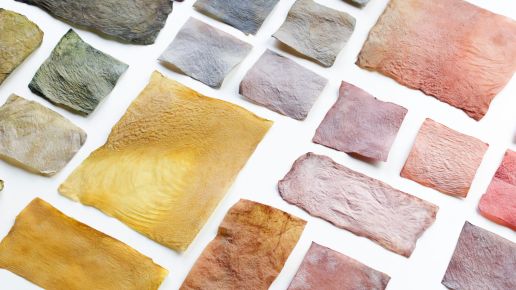
Take yeast, bacteria and sweetened green tea – this mix becomes a biodegradable, resistant and highly flexible material after a fermentation process. How it works? Microbes spin nano fibres of bacterial cellulose onto a surface. Once this layer dries, it becomes a solid material with properties very similar to leather. The thickness of the fabric can be easily adjusted during the growth process: Depending on the duration of the growth, it either becomes more unstable and thinner or firmer and thicker. Depending on the thickness, different nuances and different translucencies are created in the material. With these material properties, there are various design possibilities: For example, when wet, a texture can be applied that remains visible even when completely dry. The colour of the fabric can also be easily changed due to its high absorption capacity. Trial and error therefore pays off. Experiments with plant dyes and dyes from fruit waste have resulted in a fabric collection with bright colours, different light transmission and varied patterns.
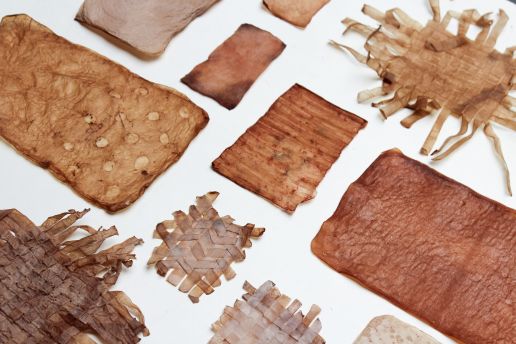
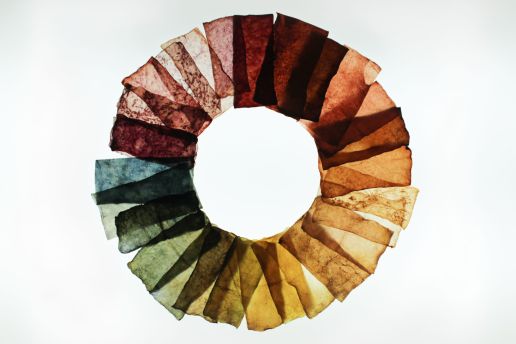
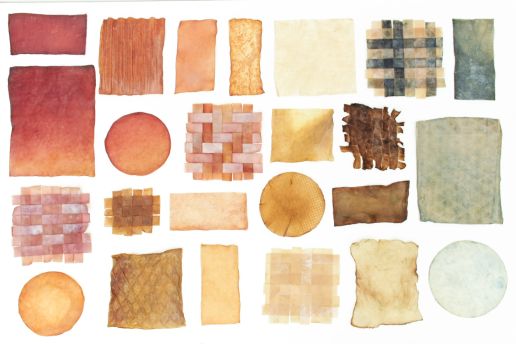
Living organisms that produce environmentally friendly materials – this stands for the “Biotic” project of the Lionne van Deursen studio from Uden in the Netherlands dedicated to material research and product design, which was launched in 2019. Through various experiments, the team generates insights into the incredible variety of new and bio-based materials. The advantages speak for themselves: only local resources are required for the production of the material and only plant-based means are used for dyeing. This results not only in sustainable materials, but above all in a sustainable production process.
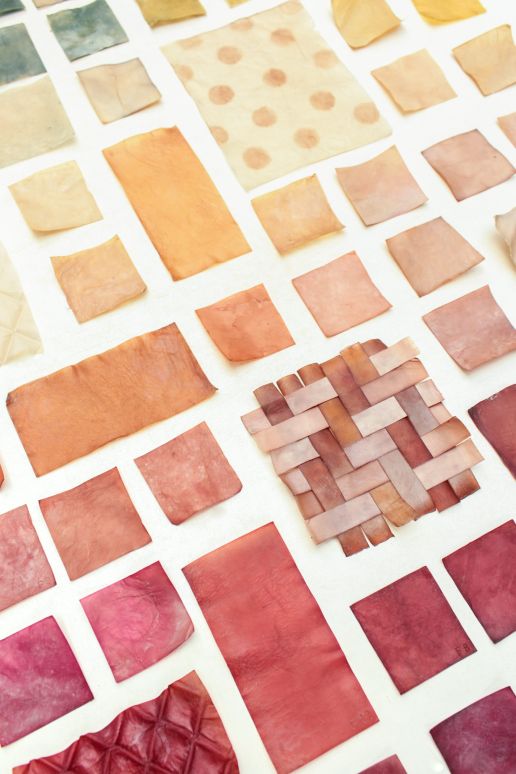
“The goal of the project is to develop sustainable products with materials that are not harmful for the environment. The project shows the possibilities of a biologically grown material. The material created by living microorganisms is biodegradable and strong while remaining a high flexibility.”
– Lionne van Deursen
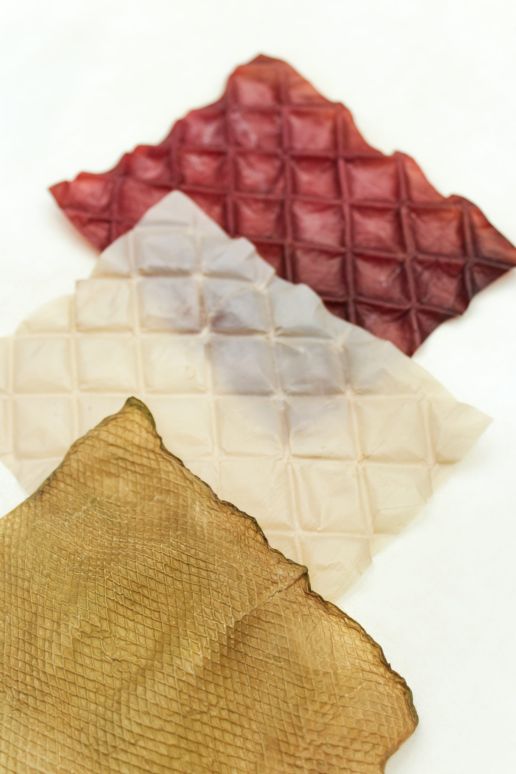
Please find more info about SUSTAINABLE INNOVATIONS in this interview with Simon Angel, curator of the Sustainable Innovations Forum:
Interview about Pre-Creation, -Action and -Connection in our industry >>
Interview about Pre-Creation, -Action and -Connection in our industry
Our contact regarding the developments that are groundbreaking for our industry? Simon Angel – Curator of the SUSTAINABLE INNOVATIONS, which are presented every season at MUNICH FABRIC START. SUSTAINABLE INNOVATIONS offers a platform for exciting young designers who create extraordinary material developments and rethink the textile world – with these insights you are always one step ahead of the market.
Here is an overview of all SUSTAINABLE INNOVATIONS of the last seasons >>
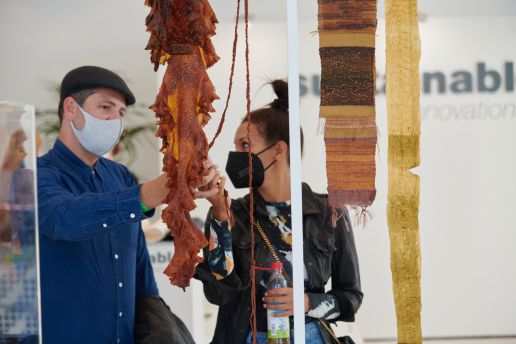
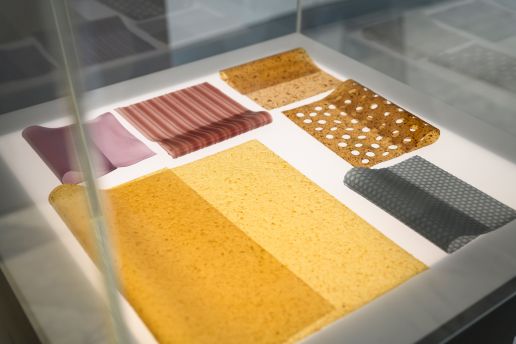
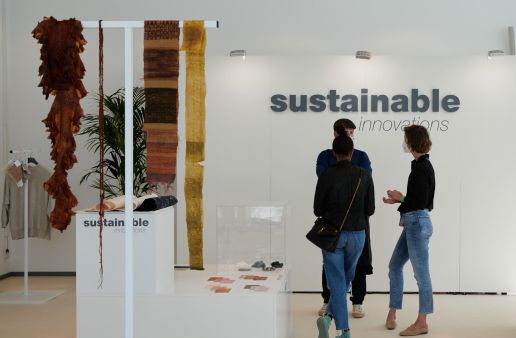
Hey Simon, it’s good to see you. How are you?
Actually, I am really busy with the investigation of social impacts – next to the primal impact of this pandemic, we also have the secondary impact on society as a whole and the challenges to our personal selves to deal with. Right now, the personal impact of global challenges is reaching its peak. And yes, whenever the pressure becomes too much, people (and the society) have to dissociate from it in order to ‘save’ themselves or to cope with the challenges. For now, this is resulting in the creation of new realities, ignorance or even denial. We have to ask ourselves what is going on right now. And what is even real, and what’s not? What is the real real? And behind the actual challenges of Covid-19 and climate change, there might be an even bigger challenge: reliability.
This new reality we have to face – how do you suggest we find solutions?
As I just mentioned, there are two keywords that I can really relate to: reality and reliability. I am noticing that we have to unravel these words to the point that tickles our consciousness. Our moral compasses. What are we really fighting for? What are our real problems? To be clear, problems like climate change, consumer behaviour, the oversupply of clothing, Covid-19 and fake news are all big issues. For sure, it’s good and important to clean up this mess, but the solution is not only to clean it up. We have to get to the core, which is: Why did we lose connection to what is real in the first place? We have to find inspiration in that instead of just pointing out the negative aspects.
“We have to get to the core, which is: Why did we lose connection to what is real in the first place? We have to find inspiration in that instead of just pointing out the negative aspects.”
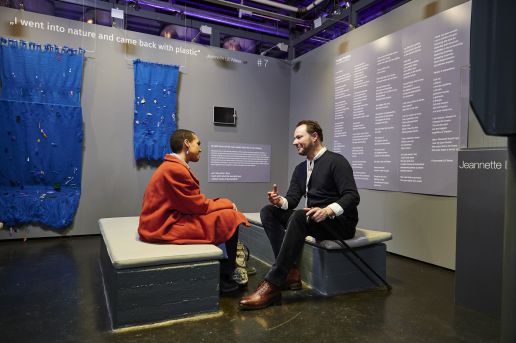
And how do you think we can do that?
I think we have to change the prefix from ‘pre’ to ‘re’… Rethink becomes pre-think. Re-cycle becomes pre-cycle.
Give this thought some time… It’s about pre-acting instead of reacting: we have to do something new to support the next generations and enable them to follow on from us. Reacting will never be inspiring. Responding to toxic things can never be fresh, inspiring, exciting or new. We cannot achieve a better future by relying on the toxic relationships that have already existed – with economics, fashion and other people.
The prefix ‘re’ in reaction or reconnection points out to what has already been there. But: What has already been there was tainted and can no longer help us. So we don’t want to react and reconnect, we want to pre-act, pre-connect, pre-do, pre-dict and pre-create. We need something pure, something fresh in order to make a change. Let’s make new pre-lationships in order to pre-connect with our future generations.
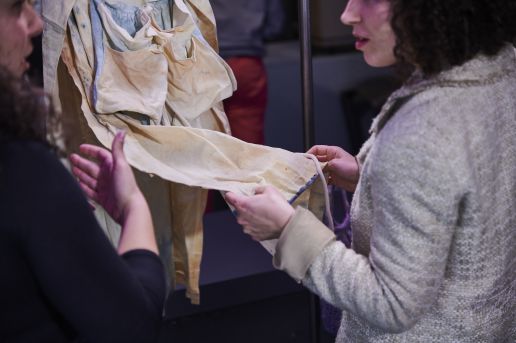
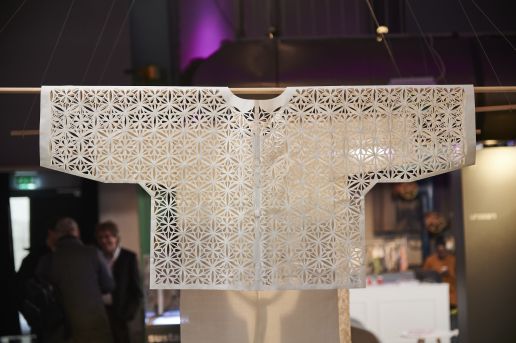
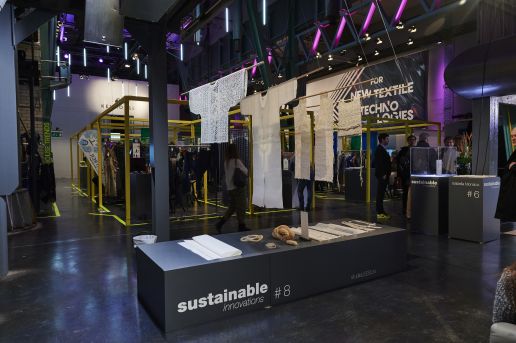
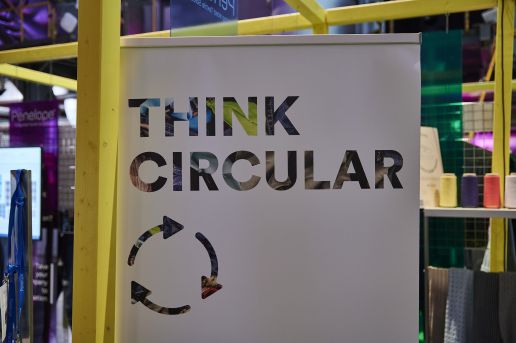
In terms of this year’s sustainable innovations, where can we find parallels to that pre-action?
We aim to focus on the real challenges, the real choices. What do we actually want?
The common goal is to be a real person in a good society with a pure relationship to nature. Our projects show how that can be done, how we can pre-act to make a change.
Motorskins offer a solution to becoming lean and active with the pre-creation of movements and support.
Studio Panorama Fabrics pre-use the substance of light with their project Sunkolor, which incorporates the substance of natural elements – this is how we can be inspired and influenced by nature.
Another example of nature’s support for better fashion is Irene Purasachit’s project Flower Matter and the order of pre-action with nature as a collaborative partner.
With projects and innovations like these, we can respond to the real questions and real solutions and face the challenges that lie ahead in the coming years. We will present these and other SUSTAINABLE INNOVATIONS to you in detail here on our M/UNIQUE blog in the coming weeks.
A Sneak Peak in our E-Magazine:
Seaweed Design by Violaine Buet
Seaweed Design® by Violaine Buet
In the beginning, there was her desire to work with a natural, living material. Violaine Buet’s choice intuitively fell on seaweed, the ancient marine plant that formed part of the landscape of her childhood in Brittany. The overarching goal of her efforts: To develop an innovative expertise on seaweed to use it in art, haute couture, scenography and decoration as well as visual merchandising and industrial manufacturing. Because: seaweed can be used in many ways. Whether weaving, dyeing, sewing, printing, embossing, tufting, engraving, braiding or pressing – the possibilities seem almost unlimited.
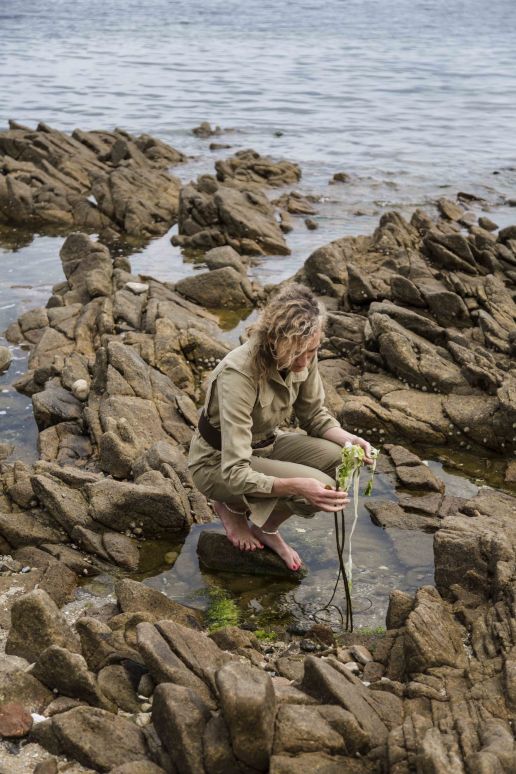
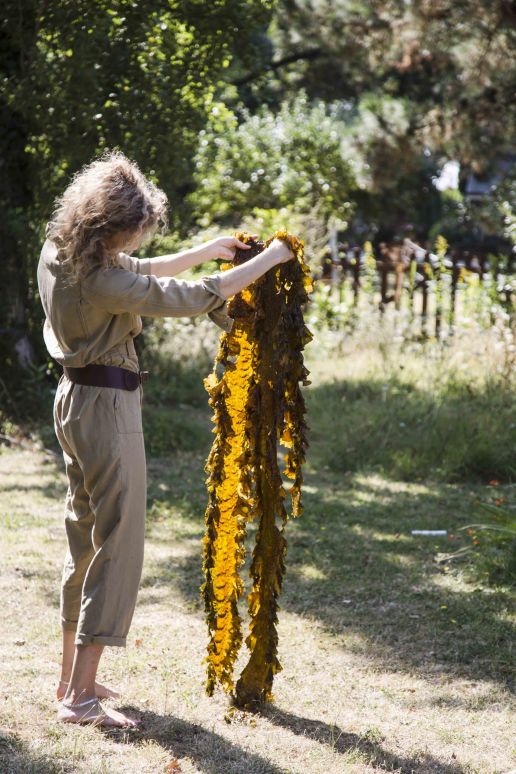
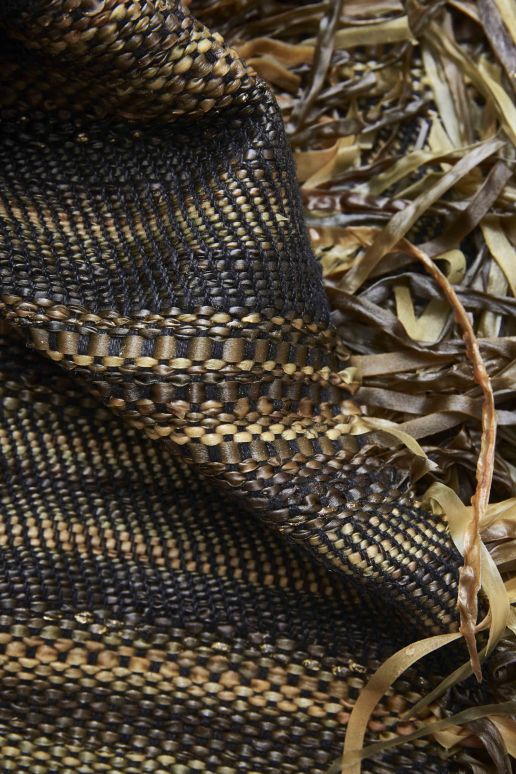
With her craftsmanship as a designer, Violaine Buet explores the aesthetic and technical properties of the material, develops natural dyeing methods with the support of experts in vegetable dyeing and biopolymer researchers. Using interdisciplinary methods, she combines expertise with craftsmanship, inspired by weavers, leather workers, jewelers, tailors, screen printers, gilders and master glaziers. In this way, she not only creates customised textiles from the biodegradable algae, but also walls, landscapes and installations.
“It’s like writing a story with an inevitable factor of time. With seaweed I have to take into account seasons, species, tides, weight, smell, particularities, colour-fade, hydrophilicity and decomposition, all of which change with time. It’s about everything coming together in a kind of balance.”
Violaine Buet
Pre-Loved by Sarmite Polakova
Pre-Loved by Sarmite Polakova
Turning old into new: material and product designer Sarmite Polakova along with designer Mara Maizele have created a completely new textile concept with their biotextile Pre-Loved. Pre-Loved consists of used textile waste and natural binders. With this product, the designers want to question the traditional concept of fabrics and shift the perspective to recycled mixed fibres. Shoddy is the name for the material made from unsaleable and no longer wearable garments. Cotton, polyester and wool: Shoddy consists of a variety of fibers that are combined into a single mass in the recycling process.
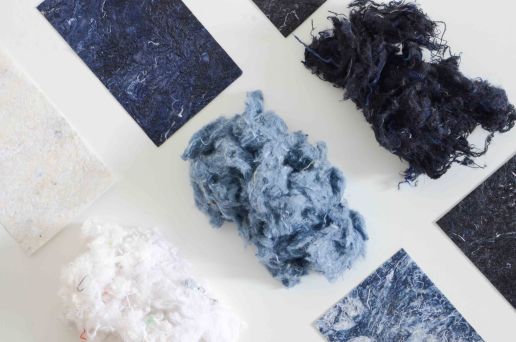
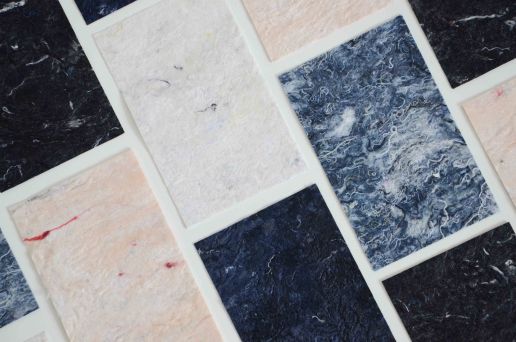
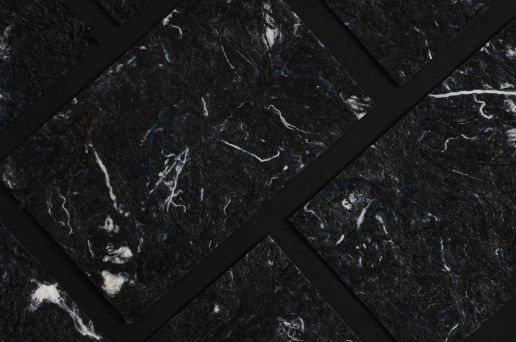
Another special feature is Shoddy’s excellent insulating properties. The biotextile can be used for a wide variety of purposes: in a warming winter coat, in a cosy couch or in a well-insulated house wall. Through colour separation, controlled patterning and even natural dyeing, the fabric also stands out with a unique look. What’s more, the short fibers, which are otherwise unsuitable for spinning yarns, are combined with bioplastics that strengthen the fibers from the inside out and give the material a smooth, leather-like surface. With Shoddy, a whole new kind of man-made fiber is created – Pre-Loved celebrates this new textile identity, bringing a new aesthetic and highlighting the former life of each worn garment through nuances of colour and texture.
“When textile waste meets bio-plastics and together they form a new leather-like material for future fashion applications.”
Sarmite Polakova
Fixing Fashion by Alicia Minaard
Copying Desired - Fixing Fashion by Alicia Minaard
Sharing knowledge, saving clothes: 3.3 years – that’s the average lifespan of one piece of clothing. With good care and a few tricks, clothes can last much longer. The digital platform Fixing Fashion has made it its goal to help those interested in caring for their favourite pieces, repairing them themselves or recycling them. On Fixing Fashion, users can find ideas, tips and instructions for protecting worn clothing with creative approaches. Designer Alicia Minaard prepared for this together with the organisation One Army for over two years: In interviews, workshops and excursions, Minaard’s network researched the best practices and methods for recycling and repairing discarded clothing worldwide – and is now making them available free of charge. The result is a collection that you can’t buy, but should imitate or use as a source of inspiration for your own Fixing Looks.
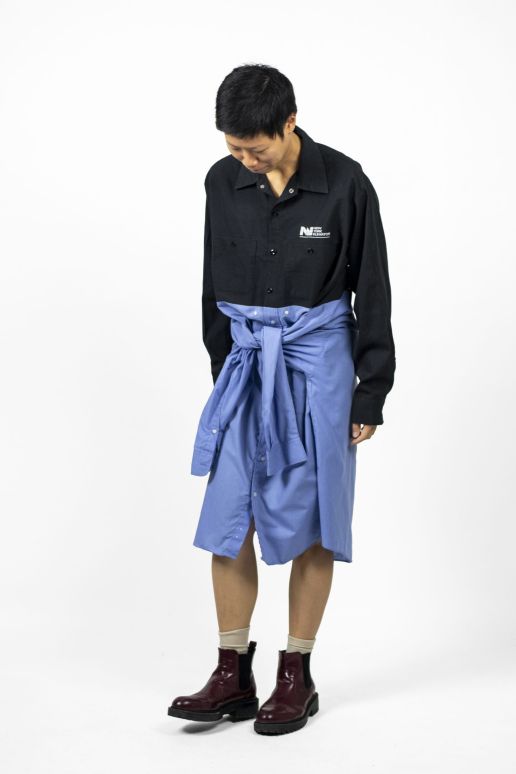

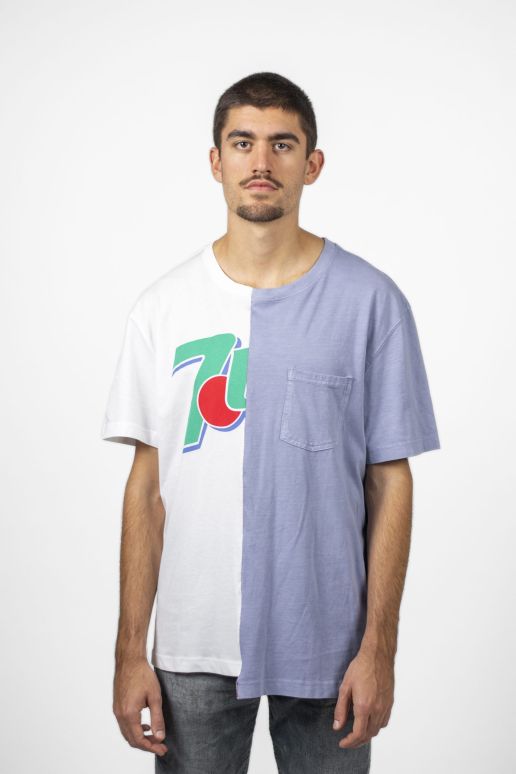
But the Fixing Fashion team is not only concerned with providing information. Rather, the initiators of the project would like to build up a community that exchanges ideas and supports each other in preserving clothing for longer – and thus, not least, in saving textile waste. By carefully caring for textiles, their lifespan can be increased from 3.3 to 4.5 years. According to the American textile waste volume, this could save 1.22 million tons of waste per year.
“The collection is not for sale. Instead, each look is merely meant to inspire. In a way it is meant to trick people, as if this is a brand but then really it has everything and you need to do it yourself!”
Alicia Minaard
New Blue Circular Denim
New Blue - A new circular denim material by Tim van der Loo & Sandra Nicoline Nielsen
Buy, wear, throw away – that’s what happens to most clothes. That’s where the principle of a circular economy comes in: Worn clothing can be much more than waste and becomes part of new and continuous material flows.
What began in 2018 as a project for a master’s thesis at the Weißensee Academy of Art in Berlin is currently supported by Re-FREAM, part of the STARTS (Science + Technology + Arts) initiative under the European Commission’s Horizon 2020 research and innovation programme.
“New Blue explores new pathways in circular economy, aesthetics and production. Denim is a ubiquitous material which is loved and used by many. It is also a significant source of waste. The challenge as we see it is to find a way to recirculate old worn out jeans and left over fibers within the system.”
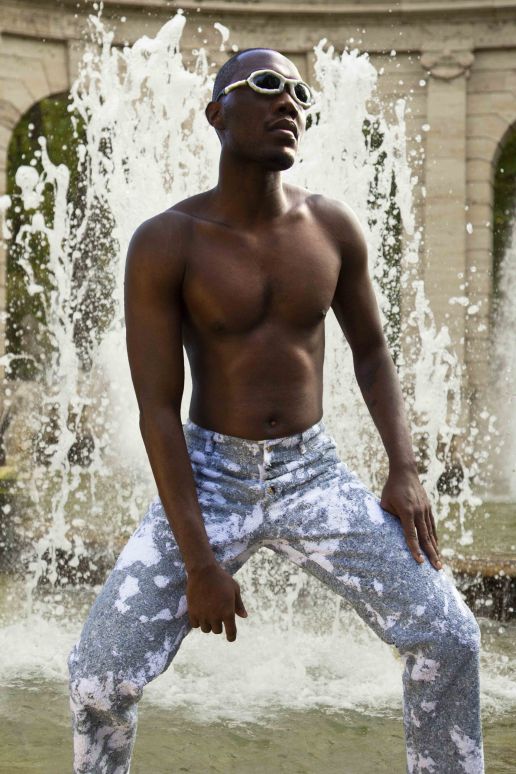
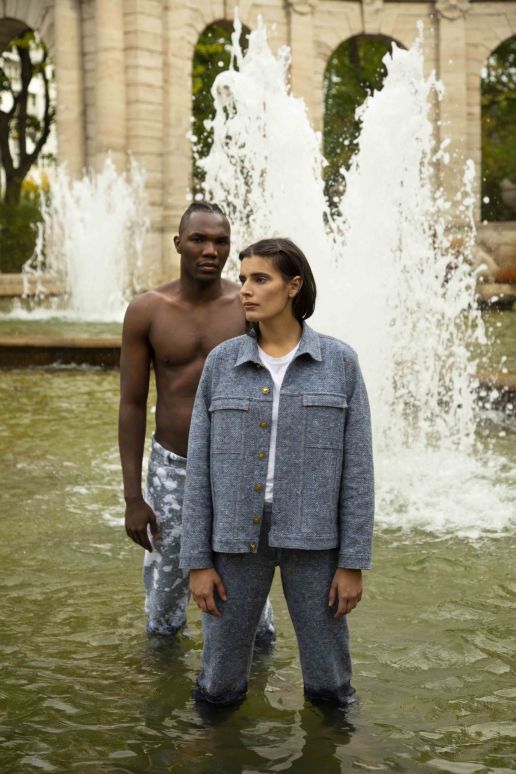
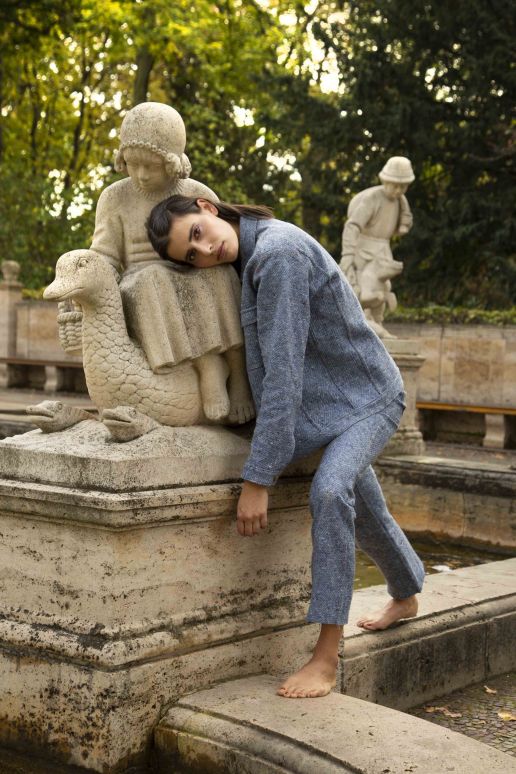
Denim was always considered a particularly durable material – until it lost its integrity due to increasing globalisation and rapid consumption. With New Blue, the new circular denim, material and product designer Tim van der Loo and techno-anthropologist Sandra Nicoline Nielsen want to change that. In their process, jeans as raw material are cut into small fibres and then bonded to form a fleece. Using a new technology using digitally assisted industrial embroidery, the pattern is made directly on the fleece. Through a unique technique, the areas defined by the embroidery remain intact when the fleece is washed, while the non-embroidered parts of the fleece dissolve on contact with water and can eventually be reused as raw material. In this way, New Blue makes circular and waste-free production of denim a reality.
Enschede Textielstad by Annemieke Koster
Enschede Textielstad by Annemieke Koster
Until the 1970s, Enschede in the Netherlands, was one of Europe’s textile strongholds, along with Manchester. Then textile production gradually disappeared from the cityscape because it was much cheaper to produce clothes and textiles in low-wage countries. With this however, traceability, protection of workers and sustainability often fall by the wayside – which is why Enschede Textielstad was born out of Annemieke Koster’s desire to bring back transparency along the textile value chain and revive the city’s former traditions.
“I want to bring textiles back to Enschede and make it a city of textiles again – where professionals who still know the craftsmanship of yesteryear pull their knowledge and find innovative approaches. But then in a new, innovative collaboration.”
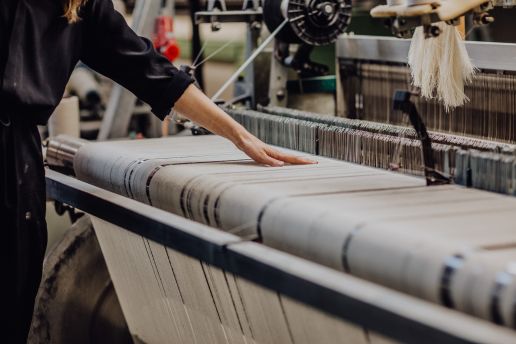
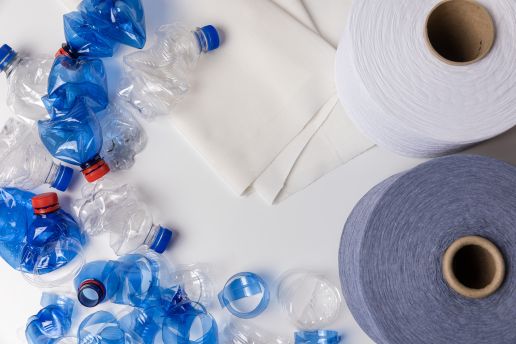
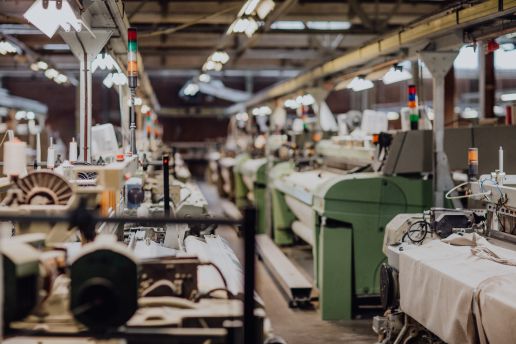
Local, natural, high quality: In the industrial weaving mill Enschede Textielstad, natural and as locally produced as possible yarns and fabrics for fashion and home textiles are created. The basis for this is formed by fair and environmentally friendly raw materials that are sourced exclusively from well-known suppliers: guaranteed Made in Europe – for shorter transportation routes and a smaller environmental footprint. Enschede Textielstad’s offers various options: Readymade fabrics produce bestsellers for direct purchase, Made To Order fabrics are woven but can be customised, or Custom Made fabrics for particularly individual ideas, new fabrics or for recycling product waste – so there is something to suit everyone.


